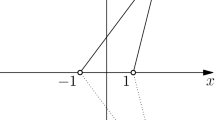Abstract
Recent developments in quantum set theory are used to formulate a program for quantum topological physics. The world is represented in a Hilbert space whose psi vectors represent abstract complexes generated from the null set by one bracket operator and the usual Grassmann (or Clifford) product. Such a theory may be more basic than field theory, in that it may generate its own natural topology, time, kinematics and dynamics, without benefit of an absolute timespace dimension, topology, or Hamiltonian. For example there is a natural expression for the quantum gravitational field in terms of quantum topological operators. In such a theory the usual spectrum of possible dimensions describes only one of an indefinite hierarchy of levels, each with a similar spectrum, describing nonspatial infrastructure. While c simplices have no continuous symmetry, the q simplex has an orthogonal group 0(m, n). Because quantum theory cannot take the universe as physical system, we propose a “third relativity:”The division between observer and observed is arbitrary. Then it is wrong to ask for “the” topology and dynamics of a system, in the same sense that it is wrong to ask for the “the” psi vectors of a system; topology and dynamics, like psi vectors, are not absolute but relative to the observer.
Similar content being viewed by others
References
Banks, T. Dothan, Y., and Horn, D. (1982). Geometric fermions.Physics Letters. 117B, 413.
Chevalley, C. (1954).The Algebraic Theory of Spinors. Columbia University Press, New York.
Chevalley, C. (1955).The Construction and Study of Certain Important Algebras. Mathematical Society of Japan, Tokyo.
Christ, N. H., Friedberg, R. and Lee, T. D. (1982).Nuclear Physics B,202, 89.
Conway, J. H. (1976).On Numbers and Games. Academic Press, New York.
Davis, M. (1978). A relativity principle in quantum mechanics.International Journal of Theoretical Physics,16, 867.
Duerr, H. P., and Saller, H. (1981). Towards a radical unification—Effective generation of hypercharge from isospin,Nuovo Cimento,65A. 147.
Finkelstein, D. (1969a). Matter, space, and logic. InBoston Studies in the Philosphy of Science V, Reidel, Dordrecht, Holland.
Finkelstein, D. (1969). Space-time code. III,Physical Review D,5, 2923.
Finkelstein, D., Frye, G., and Susskind, L. (1974). Space-time code V.Physical Review D,9, 2231.
Finkelstein, D. (1980). Quantum sets, inQuantum Theory and Gravitation, A. R. Marlow, ed. Academic Press, New York.
Finkelstein, D. (1982). Quantum sets and Clifford algebras,International Journal of Theoretical Physics,21, 489.
Finkelstein, D. and Rodriguez, E. (1983). The quantum pentacle,International Journal of Theoretical Physics, to be published.
Hestenes, D., and Sobczyk, G. (1984). InClifford Algebra to Geometrical Calculus, Reidel, Dordrecht, Holland.
Kähler, E. (1962). Der innere Differentialkalkül.Rendiconti di Matematica,21, 425. See Hestences 1984.
Lee, T. D. (1983). Discrete mechanics. Lectures, International School of Subnuclear Physics, Erice, August 1983. Columbia university Preprint CU-TP-267. We thank Professor Lee for this preprint.
Marlow, A. R., ed. (1980).Quantum Theory and Gravitation. Academic Press, New York.
Riesz, M. (1958).Clifford Numbers and spinors. Lecture Series No. 38, Institute for Fluid Dynamics, University of Maryland. Notes.
Rodriguez, E. (1984). Foundations of quantum set theory Ph.D. thesis, Georgia Institute of Technology.
Sorkin, R. (1975). The electromagnetic field on a simplicial net,Journal of Mathematical Physics,16, 2432.
Susskind, L. (1977). Lattice fermions.Physical Review, D,16, 3031.
Takeuti, G. (1979). Quantum set theory, inCurrent Issues in Quantum Logic, E. G. Beltrametti and B. C. van Fraassen, eds. Plenum Press, New York.
Toulmin, S. (1982).Return to Cosmology. University of California Press, Berkeley, California.
Von Neumann, J. (1932).Mathematische Grundlagen der Quantenmechanik. Springer, Berlin.
Von Neumann, J. (1954). Unsolved problems in mathematics, address, International Mathematical Congress, Amsterdam, September 2, 1954, unpublished. In Von Neumann Archives, Manuscript Division, Library of Congress. We thank J. Bub for this reference. See alsoMathematical Foundations of Quantum Mechanics. (R. T. Beyer, transl.), Princeton University Press, Princeton, New Jersey, 1955.
Weingarten, D. (1977). Geometric formulation of electrodynamics and general relativity in discrete space-time.Journal of Mathematical Physics,18, 165.
Wheeler, J. A. (1978). The “past” and the “delayed-choice” double slit experiment, inMathematical Foundations of Quantum Theory, A. R. Marlowe, ed. Academic Press, New York.
Wheeler, J. A. (1979). Frontiers of time, also inProblems in the Foundations of Physics, G. Toraldi di Francia, ed, North-Holland, Amsterdam, 1979.
Wheeler, J. A. (1980). Pregeometry: Motivations and prospects, inQuantum Theory and Gravitation, A. R. Marlow, ed. Academic Press, New York.
Author information
Authors and Affiliations
Rights and permissions
About this article
Cite this article
Finkelstein, D., Rodriguez, E. Relativity of topology and dynamics. Int J Theor Phys 23, 1065–1098 (1984). https://doi.org/10.1007/BF02213417
Received:
Issue Date:
DOI: https://doi.org/10.1007/BF02213417




